Ask any serious birder the first thing he or she thinks of when the circumstances of life necessitate travel outside of the locality where he or she resides. Chances are good that this birder will instantly start analyzing the new region’s birds and assessing how those findings mesh with needs and wants for this list or that. I’m guilty of this. The trip to Madeline Island was no different except….northern Wisconsin is practically a carbon-copy of northern Minnesota. It does not bode well for exciting new bird finds. However, I dug deep and came up with two birding goals that, if achieved, would make Wisconsin birding genuinely thrilling. The first was the possibility of a Black-throated Blue Warbler. Of the oodles of breeding warbler species shared by MN and WI, the Badger state has more than its fair share of the BTBWs, a bird I’d only seen once before since they are very limited in range in MN. But this post isn’t about the BTBW and instead concentrates on my second and more important birding goal of seeing the endangered Piping Plovers.
In preparation for that ill-fated 2013 Madeline Island trip, I had discovered that Piping Plovers nest on Long Island which happens to be right next to Madeline Island. These birds are part of the Great Lakes population of PIPL. This particular population is endangered as only 70 or so pairs nest along the shorelines in the entire Great Lakes region. The other two main populations of PIPL, Atlantic/Gulf Coast and Northern Great Plains, are a little more well off but still considered threatened. Long Island, which is really a long, skinny peninsula comprised of remote sandy beaches, annually hosts 3-5 pairs of the Great Lakes population of PIPL.
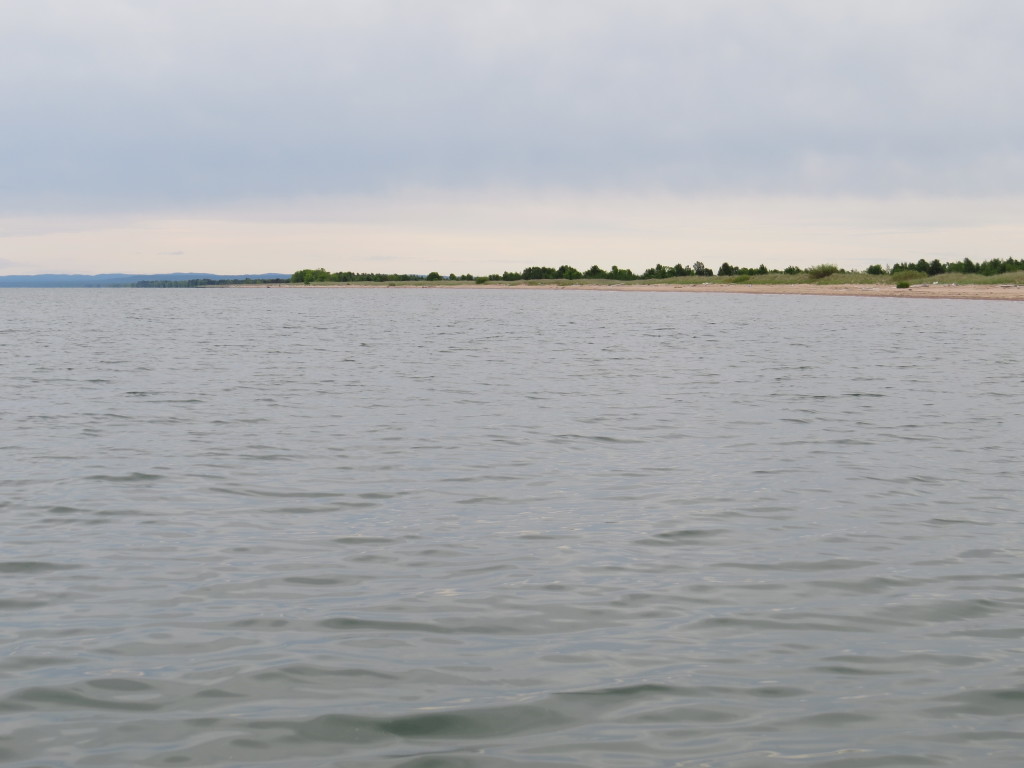
In my naivete, I looked at the map and thought Madeline and Long were super close. Yep, I’d rent a kayak at La Pointe and paddle across the channel and along the narrow Long Island shoreline to scan for Plovers. We’d take the kids for a little ride. It would be fun. It would be perfect.
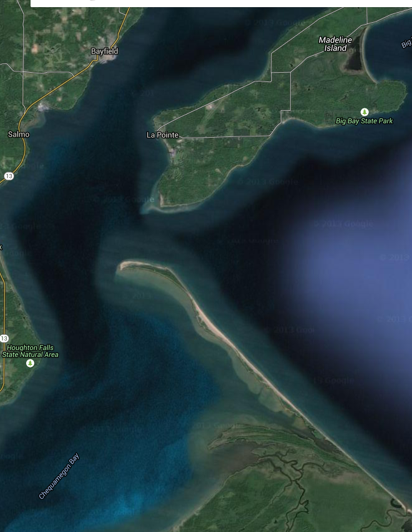
Or not. When we took the ferry to MI, I could see just how far away Long Island actually was, not to mention how much shoreline there was to search there. Even sans kids, the prospect of crossing that water in such a craft was daunting. The Piping Plover plans flew out the window or off the ferry, rather. As you can see from the map, reaching them by the mainland is not feasible either. But thanks to all the modern conveniences on Madeline Island, particularly the wifi at the cabin, I started researching other possibilities and discovered there are several water taxi services that will take kayakers, hikers, campers, photographers, etc to any place they need to go in the Apostles. Sweet! Then I saw the price. Not so sweet.
Not only would it be expensive, but I had no idea if there were any Piping Plovers out on Long this year. The most recent eBird data was from 2013. However, it is a pretty inaccessible place which could explain the lack of data. Nick Anich, one of the region’s top birders, told me that Piping Plovers breed every year on Long. It was somewhat assuring, but I got the security I wanted when I got in touch with Julie Van Stappen with the National Park Service. Julie assured me that there were, in fact, five pairs of Piping Plovers and two active nests on Long Island this year. The probability for a successful mission was now very high… just like the price. The only hindrance now was me. After much hemming and hawing and wishing and washing, I pulled the trigger in the eleventh hour, going out just before dark on our last day of vacation.
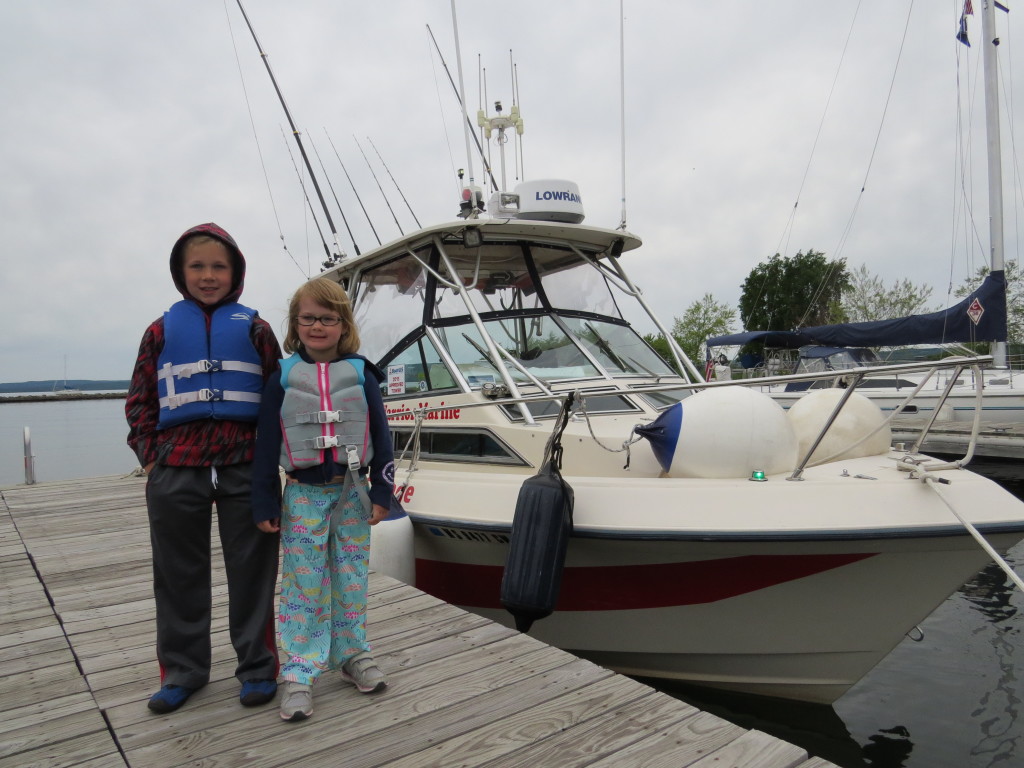 This was definitely the most I’ve paid for a single life bird. Other trips, like Arizona, are much more expensive, but the huge numbers of lifers down there makes the cost per bird pretty reasonable. In any birding trip, though, you just can’t put a price on the side-benefits, like a family speed-boat ride on Lake Superior.
This was definitely the most I’ve paid for a single life bird. Other trips, like Arizona, are much more expensive, but the huge numbers of lifers down there makes the cost per bird pretty reasonable. In any birding trip, though, you just can’t put a price on the side-benefits, like a family speed-boat ride on Lake Superior.
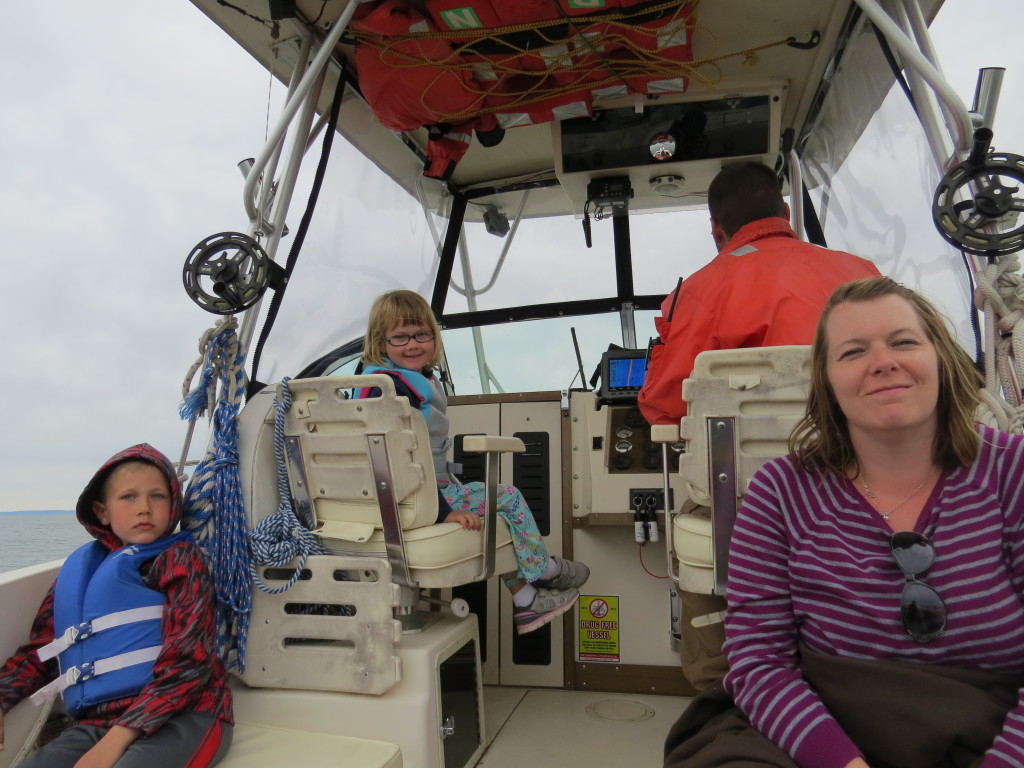
Once we were on the boat it was time to get to Long island to begin the search as we motored along the shore. But where would we look? Long Island is, well, long. Several miles long, in fact. Thankfully we had a boat captain that was somewhat familiar with the nesting area. He even pulled up his smartphone, looked up some group on Facebook associated with the Plovers, and from the profile pic that showed the nests, he knew exactly where to go. Nothing but the best.
In no time I spotted one of the nests. Ryan Brady, another top birder from the area, gave me a great tip for finding the nests. Ryan told me that they fence them off every year to keep out predators. Needless to say, the nests are actually pretty easy to find if you can get to this remote location.
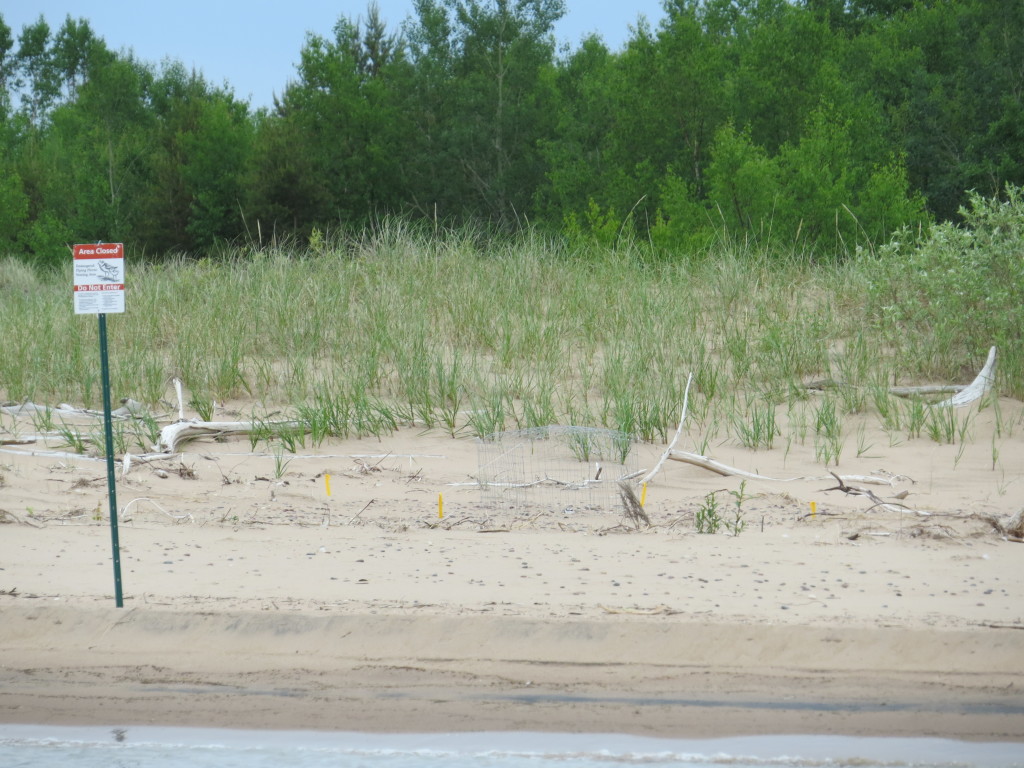 Here’s a cropped view of the above photo showing the male Piping Plover taking his turn on the nest.
Here’s a cropped view of the above photo showing the male Piping Plover taking his turn on the nest. 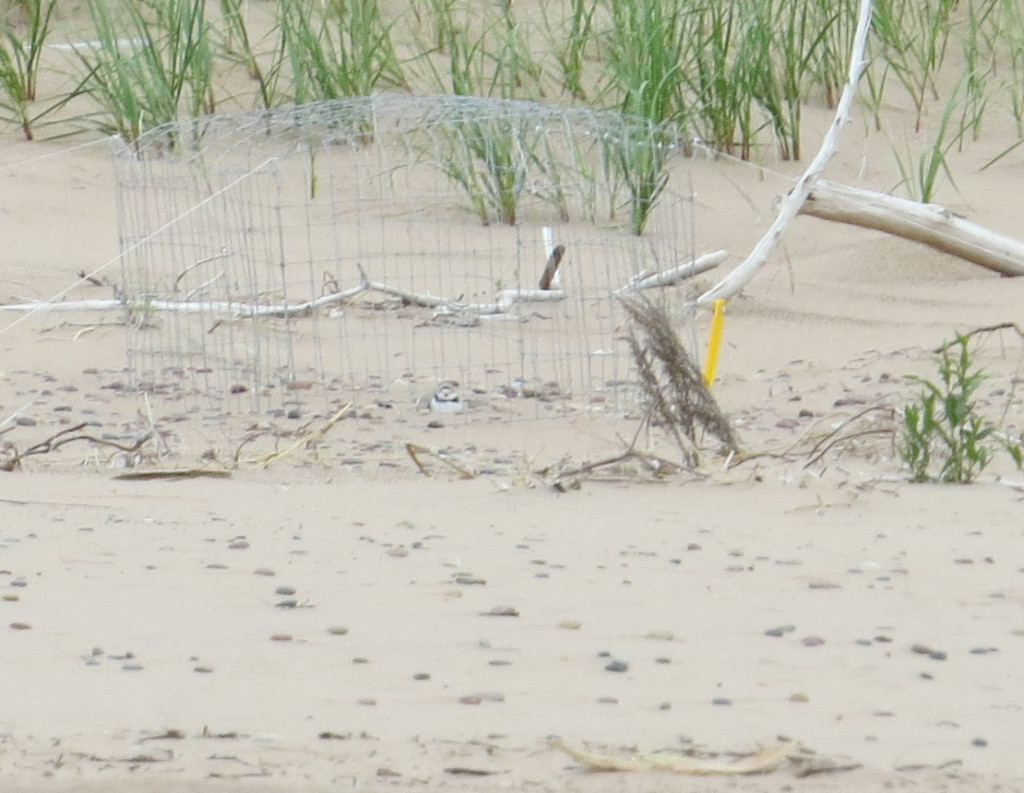 The remoteness of Long Island coupled with miles of perfect beach habitat make this an ideal place for the Piping Plovers to set up shop. Even still, the NPS takes no chances. Since Long Island (a peninsula really) is only accessible by boat, the psychological fencing is placed right at the water’s edge to ward off any beaching watercraft.
The remoteness of Long Island coupled with miles of perfect beach habitat make this an ideal place for the Piping Plovers to set up shop. Even still, the NPS takes no chances. Since Long Island (a peninsula really) is only accessible by boat, the psychological fencing is placed right at the water’s edge to ward off any beaching watercraft.
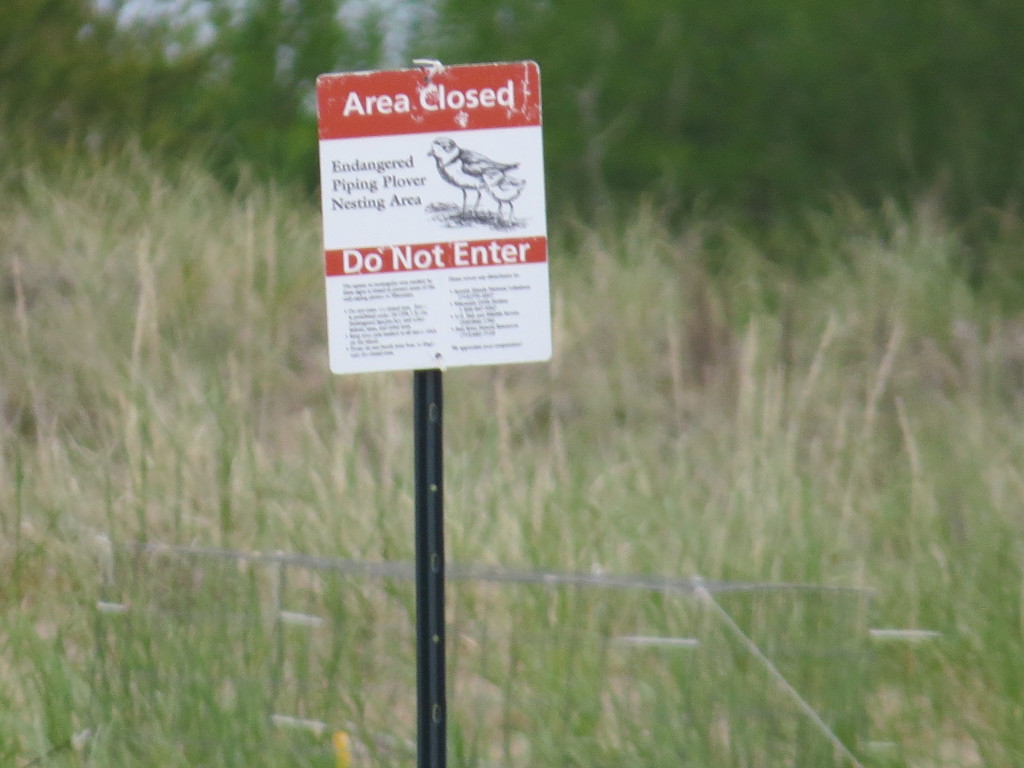
Because of the sensitive nature of this nesting endangered species, we kept a very respectful distance from the shoreline so as not to disturb the birds.
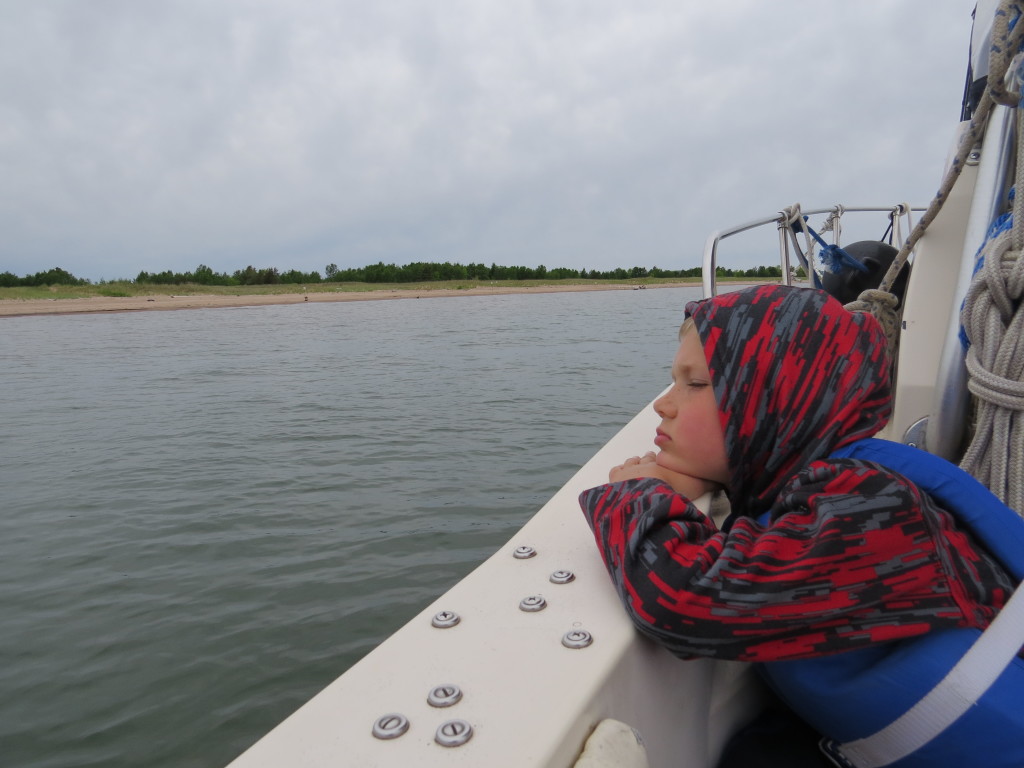
Being in this place and seeing where these birds call home was a cool experience. Sure, I might see one during migration in Minnesota with better views some day, but it’s just not the same. This is the real deal here; this is where the next generation of PIPL is made. In all my recent travels, I’ve developed a preference for seeing birds where they belong. Vagrants and migrants are fun, but seeing them in their preferred habitat can’t be beat.
That said, it was not the easiest to view the birds in this manner. The distance combined with the rolling of the boat in the waves made it extremely challenging to do any photography. I would snap some photos of the nest, then zoom in on my pictures to see the bird. As I was doing this, Melissa hollered out, “What are those birds running on the shore?” There was only one realistic possibility–Piping Plovers! Now everybody could clearly see the birds even though they were a bit distant. It was pretty neat to have a pair of them in view. They really blend into the sand.
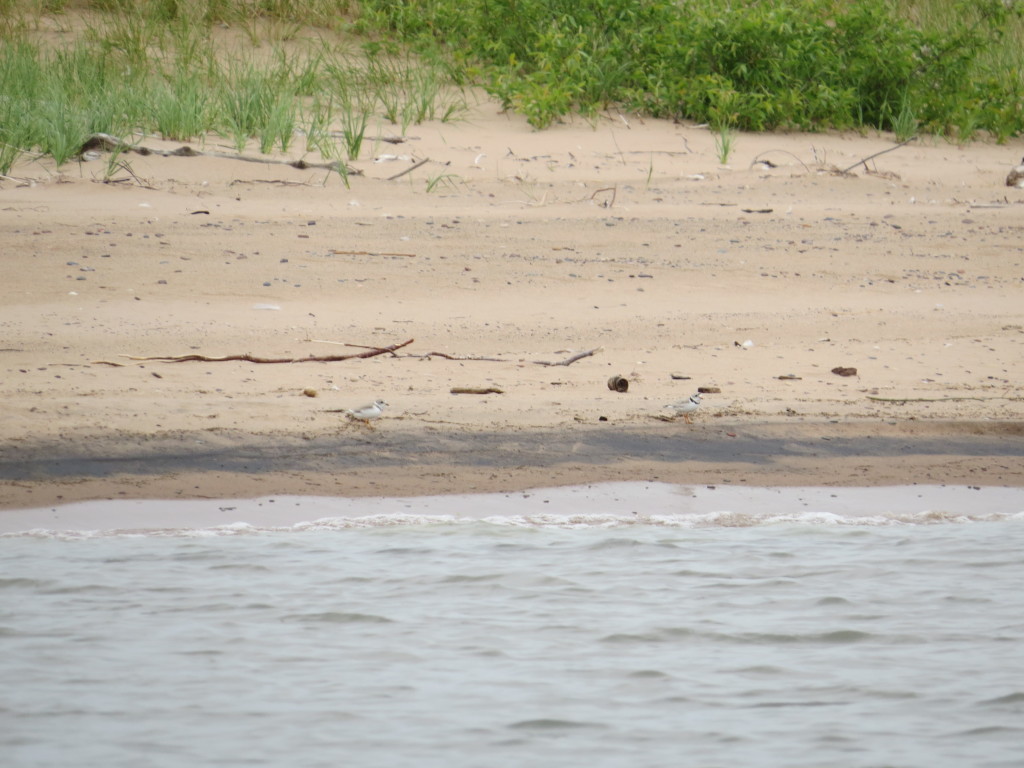
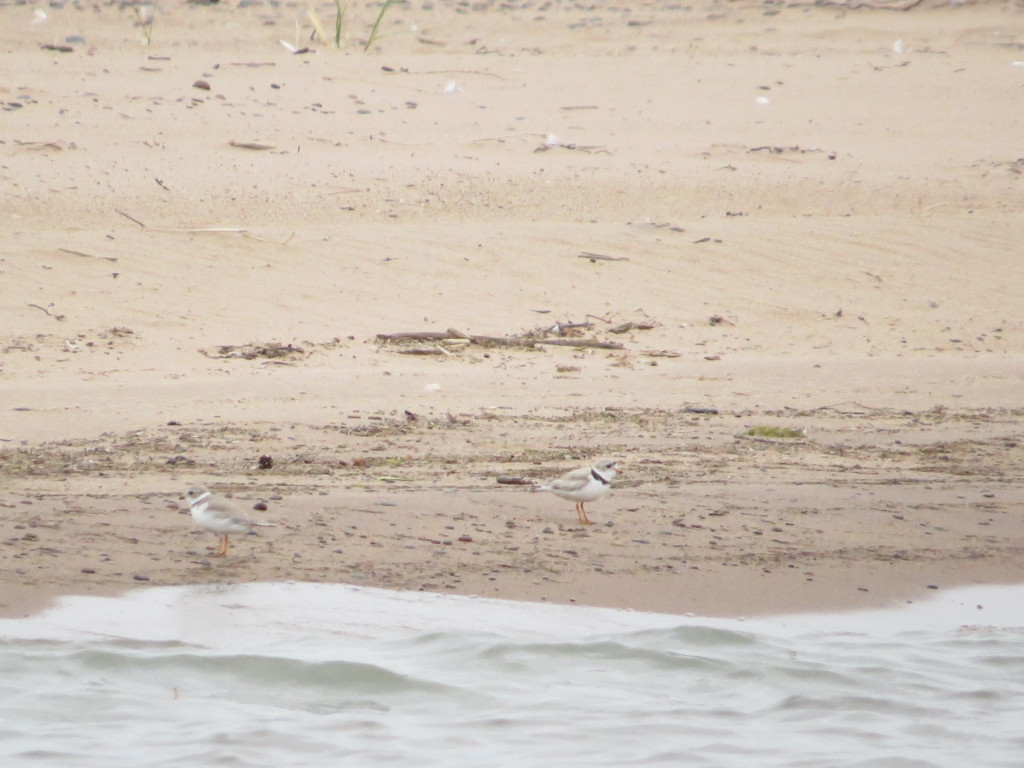 My photos are not the best, but honestly, I’d be an irresponsible birder if I did show you great photos from this outing because it would mean I was close to them. The well-being of these birds–the well-being of a species–comes first. And these guys need a lot of space to do well. Even so, I got some bloggable shots of both sexes. Ladies first.
My photos are not the best, but honestly, I’d be an irresponsible birder if I did show you great photos from this outing because it would mean I was close to them. The well-being of these birds–the well-being of a species–comes first. And these guys need a lot of space to do well. Even so, I got some bloggable shots of both sexes. Ladies first.
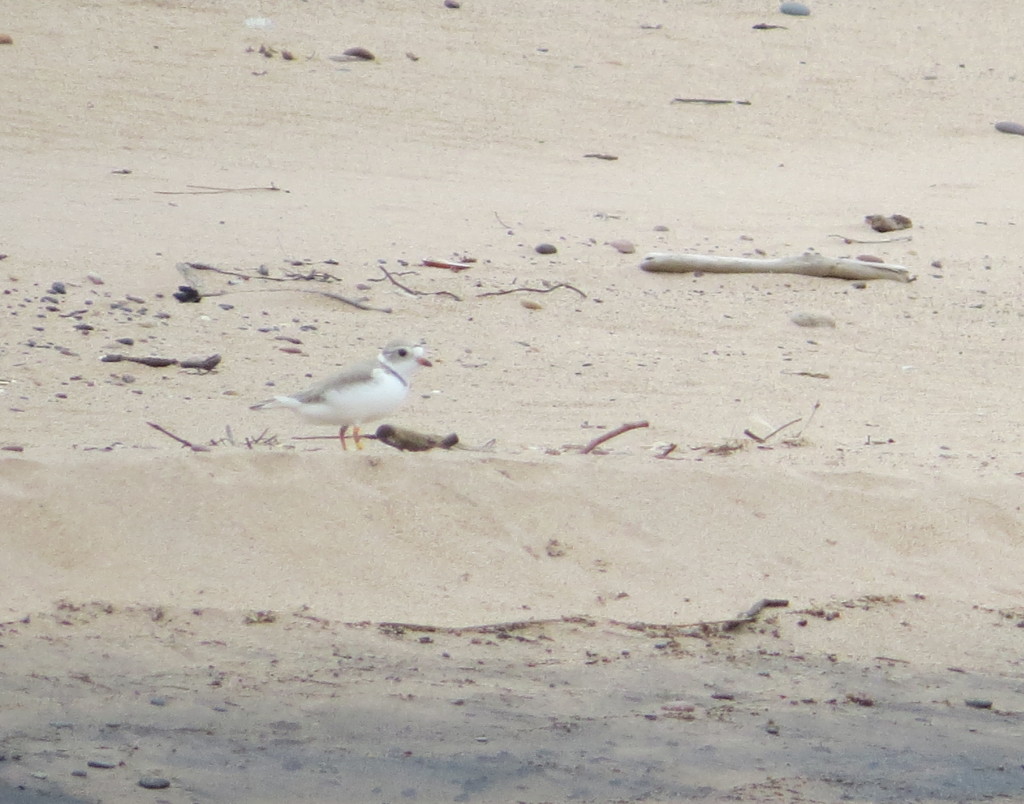
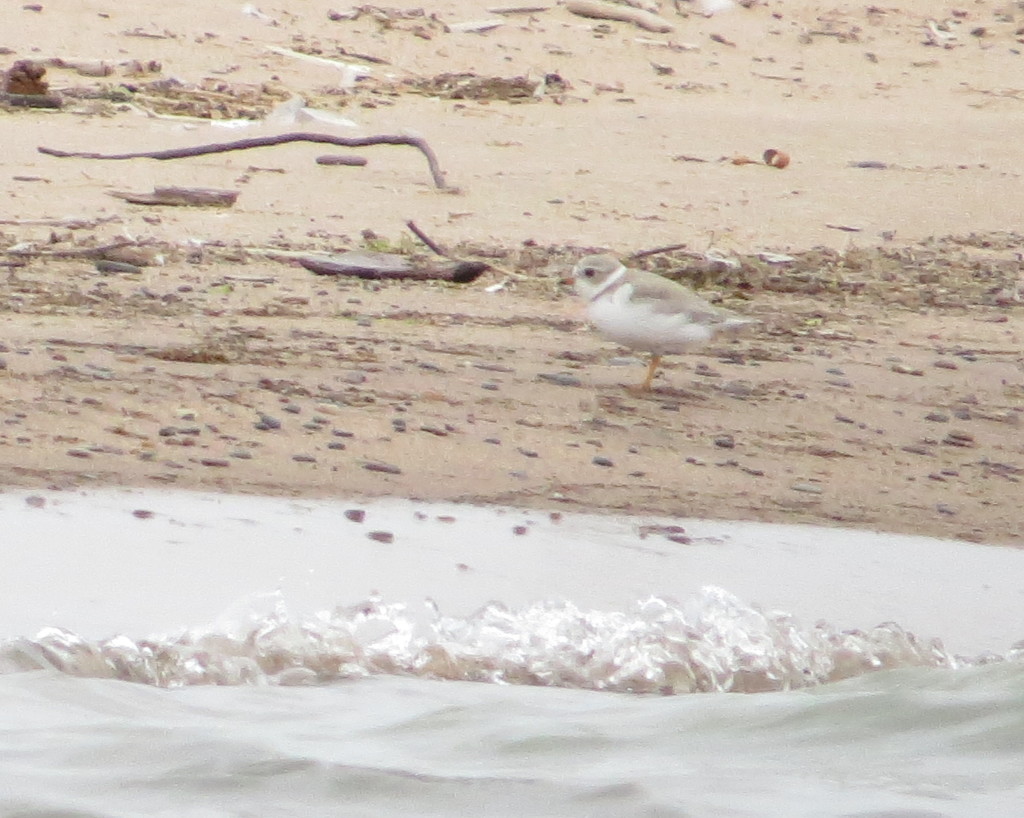
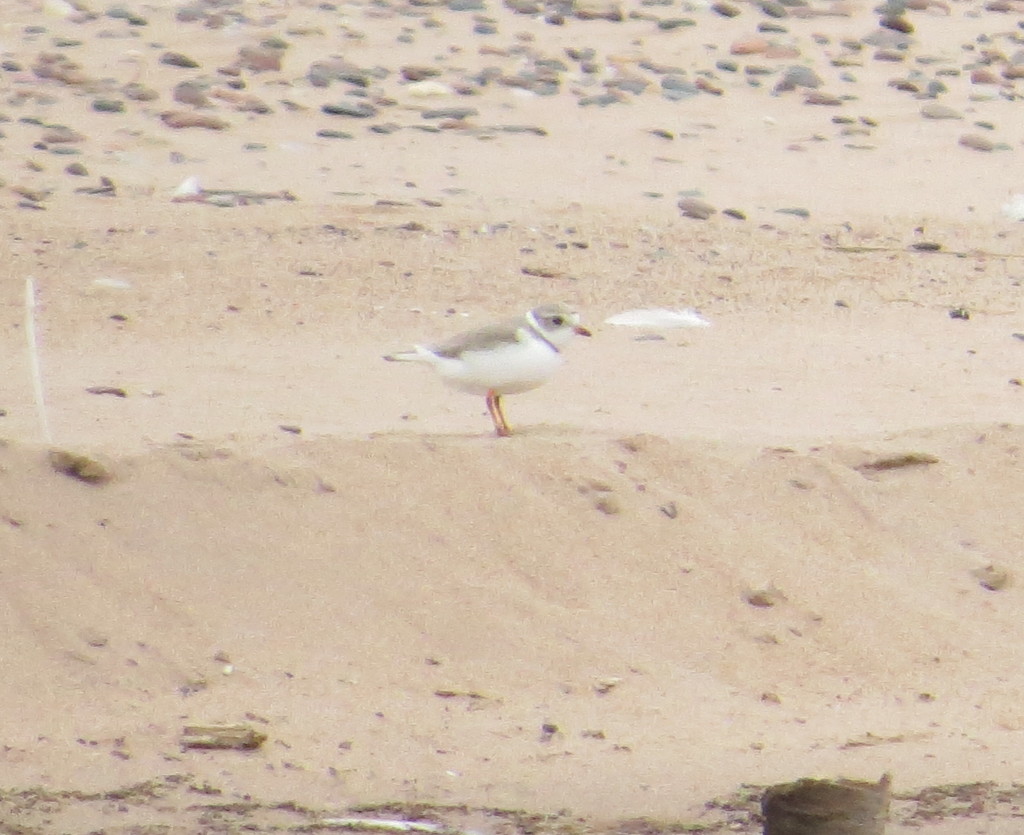
And the male. Note the jewelry on the legs.
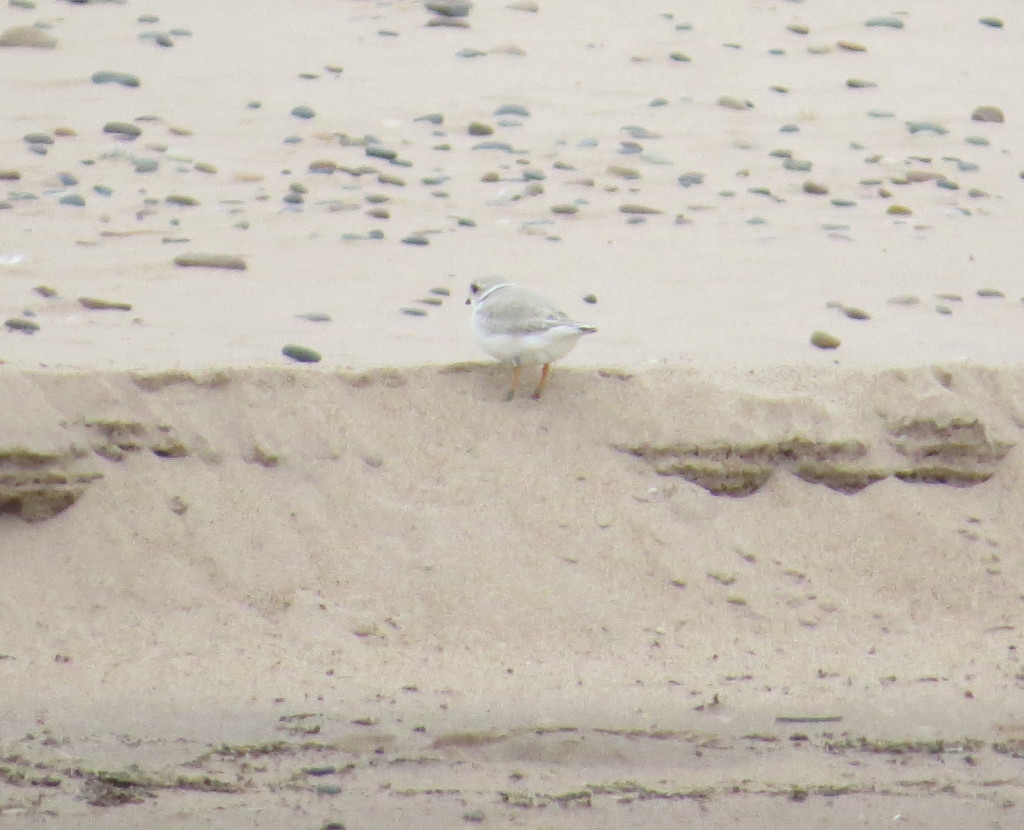
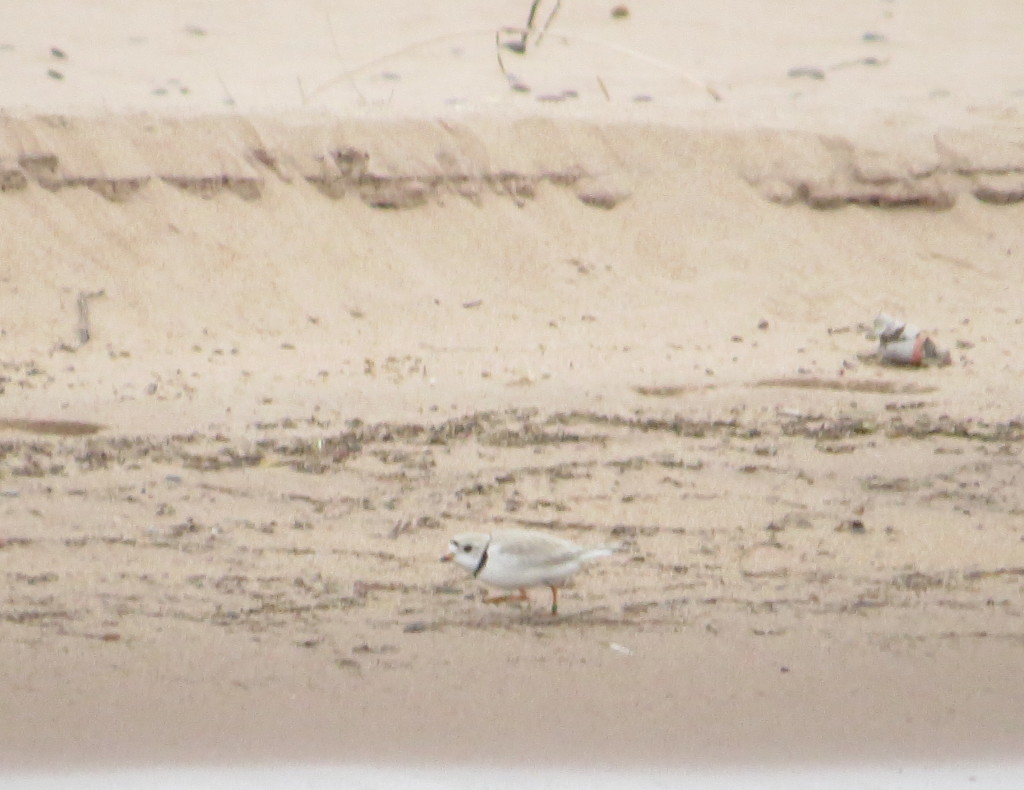
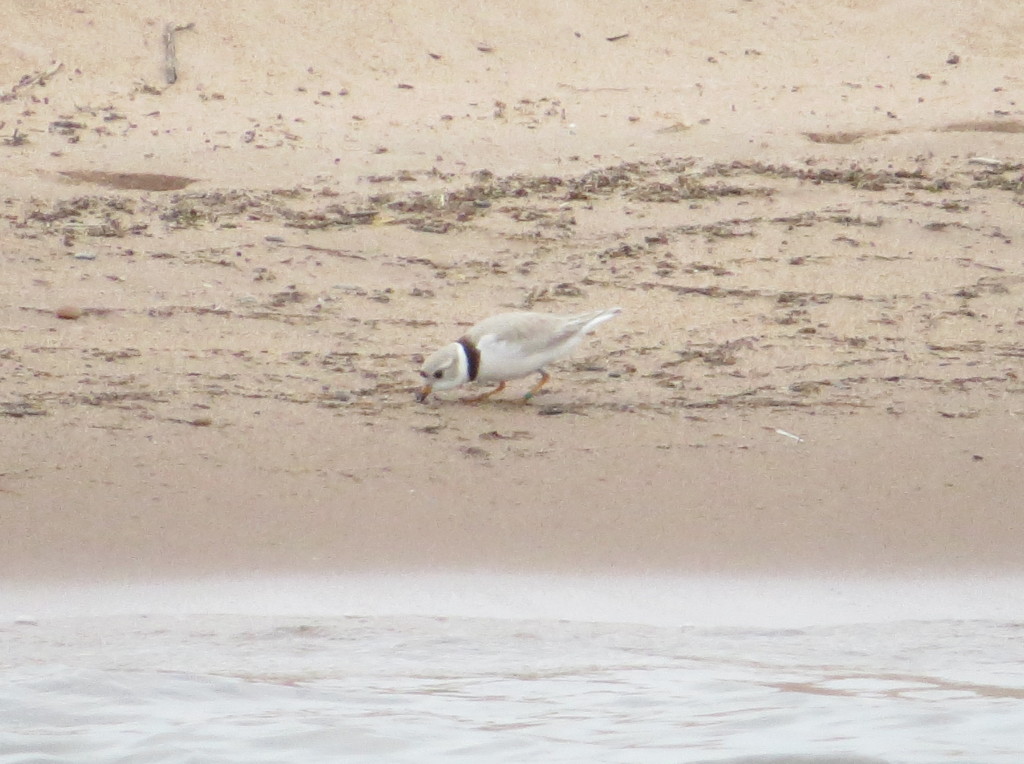
With the water-taxi meter ticking and with a few photos in hand, it was time to head back. It was a fun and short trip. I don’t even want to talk about the price-per-minute. Chartering a boat to get an endangered species lifer on its turf was pretty neat experience, though. Oh, and that kayak idea? Yeah, we logged 14 miles round-trip.
For the final Madeline Island post, we’ll be back on land with some much better bird photos. Coming up we will see Warblers up close and personal in the best way possible–on breeding territory.

I’d probably still be trying to get back to Madeline on the Kayak.
Yeah, unless you capsized and died of hypothermia first.